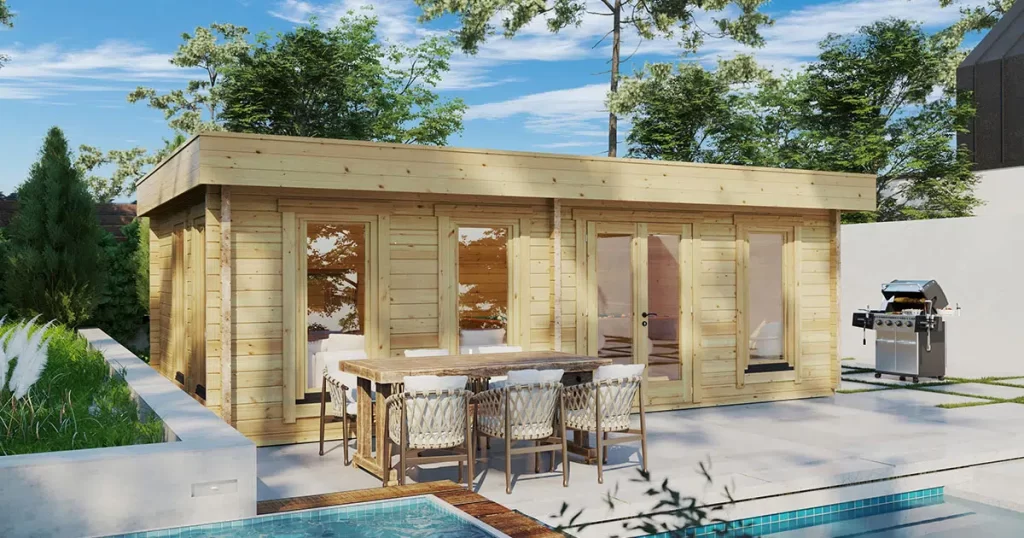Garden Buildings
Garden buildings are available in a variety of materials and compared to wooden garden buildings, plastic and metal buildings are often cheaper and easier to construct. However, wooden garden buildings are not only more sustainable, but because they last much longer, they can also be cheaper in the long run. Find out more about wood as a building material and how to find an eco-friendly summerhouse for your garden.
Advantages of wood as a building material
Unlike plastic and metal, wood does not require energy-intensive manufacturing methods – it grows all by itself, sequestering carbon in the process. Once harvested, it only needs to be transported and cut to size. At the end of its use cycle, wood can be repurposed and eventually used for bioenergy, whereas plastic and metal require energy-intensive recycling.
As it grows, wood encapsulates tiny pockets of air, giving it natural insulating properties. At the same time, wood can absorb and release moisture. If the humidity inside the house is higher than outside, the wood will transfer moisture from the inside to the outside.
Precious wood: why garden buildings are the best way to use it

Wood is used not only as a construction material but also as a source of energy and for paper production. As more and more forests are converted to farmland or urbanized, this high demand means that many forests are cut down rather than managed sustainably. According to the WWF, the world’s forests could sustainably produce 3 billion cubic metres of wood a year. In reality, 4.3-5 billion cubic metres are harvested each year, and wood consumption continues to rise. This is largely due to the increasing use of paper for packaging. However, the use of more plastic packaging would also harm the environment. The key to using wood responsibly is to take advantage of its reusability. Instead of using freshly cut wood for paper, it should be used to construct buildings and furniture. Thus, it stores the carbon absorbed during its growth for many years. At the end of the building’s life, the wood can be recycled into chipboard, paper and eventually bioenergy.
Finding a sustainable garden building Some manufacturers use thin boards of low-quality wood to make cheap garden sheds, which will not last long and have poor insulation properties. Others use expensive tropical woods that are often illegally sourced and contribute to deforestation. If you care about the environment and want a sustainable garden house, choose one that meets these criteria:
· Made from FSC-certified wood, ideally sourced in Europe
· At least 44 mm thick walls for durability and insulation
· Double-glazed windows and quality locks
One company offering high-quality garden houses is Summerhouse24. Their wood is sourced and cut in Europe, and they have won awards for their excellent products and customer service. Their online shop offers extras such as thicker walls, insulation kits for the floor and roof, and wood treatment products. If you’re considering a garden building, you might find their range worth exploring.

